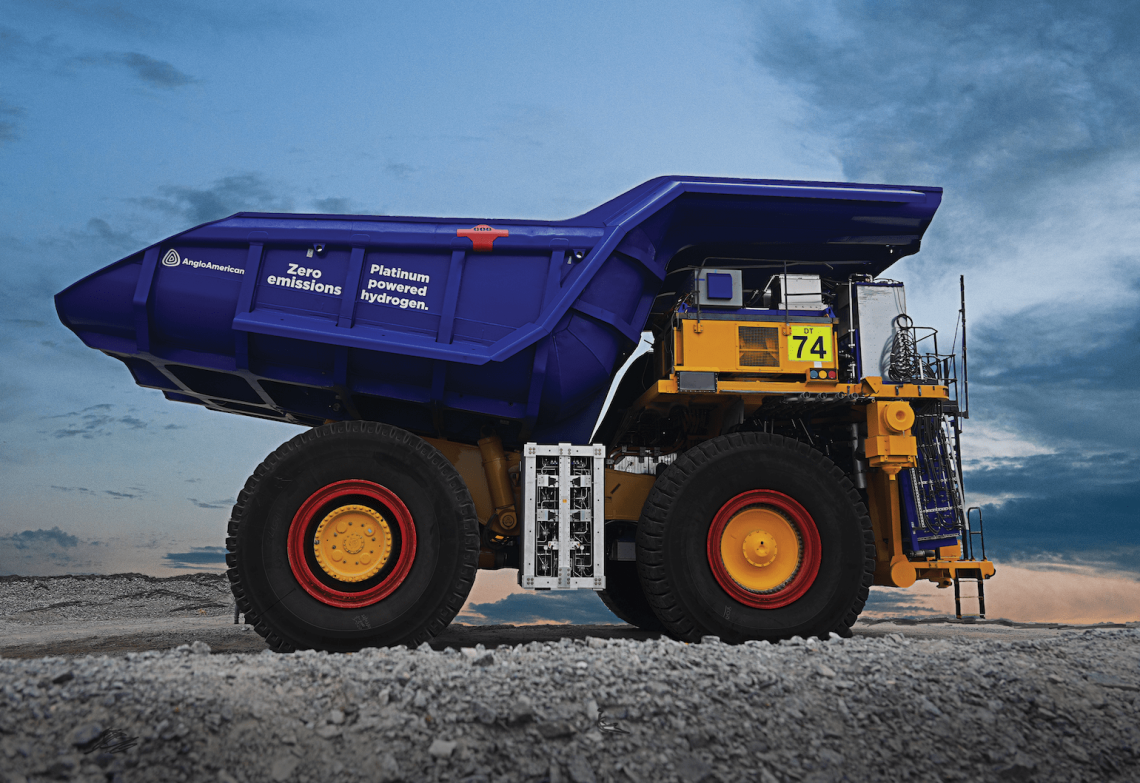Inside the consortium of mining companies shaping the future of green hydrogen in Australia.
Every three months, one meeting sees some of Australia’s biggest miners set their usually competitive natures aside. Instead, Anglo American, BHP, Fortescue, Shell and engineering consultancy Hatch meet to openly share what they’re working on, trends and key challenges they’re facing.
It’s known as the Green Hydrogen Consortium, and it’s shaping the decarbonisation of Australia’s mining industry.
Lana van Wyk, a chemical and mining engineer who represents Hatch on the group, says the consortium aims to understand how the use of hydrogen and its supply chain will evolve in the mining industry.

“There’s a lot of sharing the type of projects we work on, and sharing our challenges and our ideas,” she says.
Van Wyk, a principal at Hatch, says the biggest issue for the miners is whether to develop a common supply chain or go it alone. “The key question really is does everybody build their own hydrogen electrolyser in their own backyard on their own mine,” she says. “Or do we leave value
on the table if we do that? Do we actually need to
collaborate as an industry?”
Future investment
Hydrogen is produced by running electricity through demineralised water, splitting it into hydrogen and oxygen. When this electrolysis is achieved through renewable resources like solar, wind or geothermal energy, the result is green hydrogen.
Long-term, the consortium wants to actively back projects that will scale in favour of rapid hydrogen development. While the consortium operates with strict competition rules – they can’t do anything that would breach the Competition and Consumer Act – van Wyk says the group wants to find places to collaborate.
“I think we’re all looking for that one problem that we all face that we can perhaps in the future invest in together to solve,” she says. “Obviously, because of the size of these companies that are involved… we bring a lot of spending power, and there’s lots of capital.
“So it’s really about building that shared trust and understanding around the key problems, so that we can then decide how we want to solve that problem together.”
Much of the consortium’s focus to date has been finding an alternative to diesel fuel. “Fuel displacement is a huge headache for the mining companies,” van Wyk says. “The amount of diesel that’s consumed, for example, in the Pilbara is 6000 megalitres every year.
“That’s just for the iron ore industry. The carbon footprint of that’s obviously immense, and then trying to displace that diesel use with green hydrogen is a big focus.”
The promise and the challenges of green hydrogen
Green hydrogen is currently costly, technically challenging and can be hazardous. It’s up to three times more expensive than supplies from gas, although some claim the cost of production from renewable sources could reach parity by the end of the decade.
For van Wyk, the timing of green hydrogen becoming economical is “horses for courses”.
“There are specific applications in remote areas where bringing diesel in and storing it is now on par with producing hydrogen at site and storing hydrogen onsite. Just because of the high cost of diesel in those remote areas.
“And most mines are in extremely remote areas. So there’s definitely applications for diesel displacement that are already economic. There’s no question about it.”
Van Wyk says Hatch recently completed a study for Grange Resources in Tasmania that estimated the cost of green hydrogen production at between five and six dollars a kilo. In applications like the use of natural gas for pelletisation and calcination, it’s a price that makes the business case hard.
“In those areas, we’re going to need a hydrogen price closer to two dollars,” van Wyk says. “Is two dollars going to happen? We think it could happen.”
“The tipping point for it is the penetration of renewable energy into the energy markets. There’s a certain point when we have enough wind and enough solar, the price of the grid will be low enough to really supply that hydrogen.”
One model being investigated by the Heavy Industry Low-carbon Transition Cooperative Research Centre (HILT CRC) is producing green hydrogen during periods of peak power generation.
At these times, there is excess electricity and the grid needs to be curtailed. “Certainly just plugging into a grid electrolyser right now and producing does not make any economic sense,” van Wyk says. “It’s way too expensive.
“But if it’s on its own grid, or you run it during critical curtailment periods – which you can, electrolysers are quite flexible, you can switch them on and off as you like – there is certainly a business case to be made. Because suddenly you’re running with free or negative-priced electricity.”
A new generation of engineers
With green hydrogen, we’re seeing an extraordinary linkage between fuel, transport systems and energy systems, van Wyk says. She believes we’ll need almost every discipline of engineering, including electrical, chemical, mechanical, civil and marine. “It will require every engineering skill that we have at scales that we’ve not seen before,” van Wyk says.
She hopes climate change will be a catalyst for more young people to choose engineering as a career. “There’s a generation of engineers that don’t want to work in mines, they don’t want to work in fossil fuel, they don’t want to work in coal-fired power generation,” van Wyk says.
“This hydrogen in renewable energy industry is really where they can now go, and they know they’re contributing to something positive. They’re really making a change, and they’re helping decarbonise the planet.”
Overcoming the engineering challenges around clean hydrogen will be the topic of a session at the upcoming Climate Smart Engineering conference, on November 22-23. CSIRO Energy Senior Principal Research Scientist Dr Sarb Giddey will discuss the work start-up Endua is doing to unlock clean hydrogen’s benefits. Learn more here.



